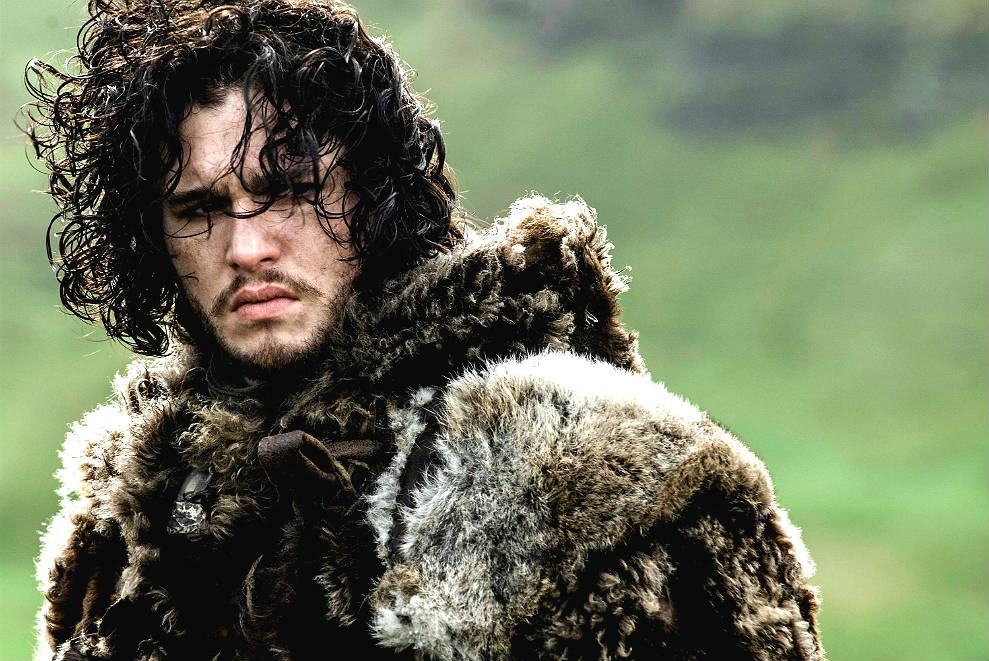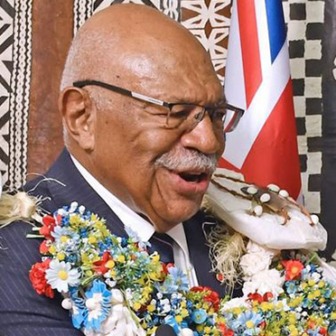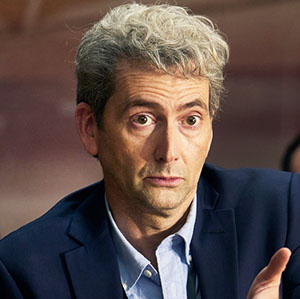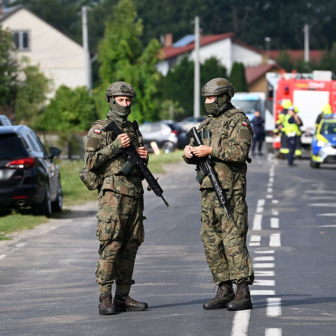Moving in slowly, past the face of the giant ice wall high above the snow-bound landscape, the camera shows dawn breaking across the horizon. At ground level, all is dark. Only a few pinpoints of light signal human habitation, though the snow reflects its own strange light and reveals the outline of a slain man. Is Jon Snow really dead? The question burns in the minds of the several million viewers who have followed Game of Thrones into its sixth season, but in this world human destiny is subordinate to the play of larger elemental forces.
The characters in George R.R. Martin’s saga soon learn that trying to guess what has happened or is going to happen is a fool’s game, and here at Castle Black, under the great wall that shuts off the wilder reaches of the North, the play of natural and supernatural powers is at its most unpredictable. Humans, diminished by the scale of their own fortifications, move warily and exchange few words, focused only on the task at hand. A lesser dramatic imagination would have them react to the identity of the body, call for lights, indulge in emotional outbursts. There are certainly plenty of emotional outbursts in Game of Thrones, but they too are unpredictable: reactions suppressed in a moment of crisis may surface many episodes later, stored up in narrative lines that keep the tensions throbbing across a vast canvas of events.
In the show’s sixth season, it seems at times that the vastness has got out of hand. Just how many armies can you track across how many different kinds of terrain? We have an armada, the dragon-led shock troops of liberating Queen Daenerys, an army of supernatural “white walkers,” a state-of-the-art militia backed by ranks of archers under the command of evil Ramsay Bolton at the fortress of Winterfell, and Jon Snow with his ragtag assemblage of fighting men and women assisted by a giant.
As for the tally of paybacks and thwarted rightful claims, most of us long ago lost count. What matters is the immediacy of each encounter as it unfolds, and the conviction with which it is staged. Formal dialogues in courts and palaces are balanced against scenes of travellers crossing tracts of empty terrain on journeys between one seat of power and another. Digitised scenes of massed crowds or panoramic shots, with fantastic towers surmounting the cliffs, are offset by fine naturalistic detail in more closely shot sequences.
Game of Thrones is a hybrid of television and cinema, maximising the visual range of television with a commitment to massive scenic effects and complex locations. Filming for this latest season took place in Northern Ireland, Spain, Croatia, Iceland and Canada. No expense has been spared (the budget is over $10 million per episode), with two and sometimes three filming units working concurrently to allow more time for each strand of the story. The costumes (April Ferry), detailed with elaborate symbolic designs and accessories, are a work of art in themselves.
As I re-watch particular episodes, I’m also struck by the subtle artistry of sound that draws the viewer into a scene. As a lone figure looks out across the bay, a distant bell sounds. Travellers moving through the forest are all ears for the sound of horses’ hooves or the jingle of a bridle that may signal the approach of assailants. When the attack occurs, the sound mix becomes a chaos of drawn steel, whinnying horses, grunts, roars and the spray of blood landing on snow. You always hear the blood.
Over the course of six seasons, viewing figures worldwide for GoT have grown from just over two million to nearly nine million. It’s the combination of theatrical and cinematic qualities, I’d suggest, that has held the audience. Most of the leading cast members have extensive stage acting experience. They have the kind of presence that makes them convincing as power players in a medieval world, and they bring the necessary gravitas for the more formal scenes. They understand how formality may be used as a weapon, how there is no remark without subtext, as the relationship between meaning and statement is twisted to give every dialogue a running edge of tension.
And they can deliver a speech with aplomb. I’m a late convert to the series, having avoided the first two seasons on the assumption that there was just way too much violence, and nasty violence at that. Which, of course, there is, but there are other things, as I discovered when I walked in on an episode in the middle of season three, and ended up sitting down to watch the rest of it with other members of the family.
In this episode, two Machiavellian characters – Littlefinger, alias Lord Petyr Baelish (Aidan Gillen) and Lord Varys (Conleth Hill) – are talking in the empty throne room, contemplating the legendary throne of a thousand blades. “There aren’t a thousand blades,” says Littlefinger. “There aren’t even two hundred. I’ve counted… Do you know what the realm is? It’s the thousand blades of Aegon’s enemies, a story we agree to tell each other over and over, until we forget that it’s a lie.”
Now that’s good scripting (the episode was written by showrunners and overall masterminds of the series, David Benioff and D.B. Weiss). The Machiavel is not an easy character to write. Nuance is required: a sophistication of tone and perspective that can’t be faked. And Littlefinger has more to say here, in a speech about chaos that is one of the thematic keynotes for GoT.
In theatrical terms, good scripting involves a sense of dramatic structure and level. That’s what enables a writer to take risks and bring off a scene that might descend into absurdity under less skilled management. Take, for example, the scene in which Tyrion Lannister (Peter Dinklage) decides to front up to the dragons in their dungeon and try to talk them round, so he can get close enough to unclasp their halters. Tyrion, as the despised dwarf in the ruling family, has learned to talk his way into or out of anything, which means the writers are on notice to give him convincing material, but they are careful not to overplay their hand here.
It’s a very quiet scene, beginning with Tyrion descending the staircase carrying a torch. We watch him go all the way down, hearing only the sounds of his footsteps, and the torch flaring. So much of the art of theatre is the art of restraint, and so much television drama is ruined by being over-pitched, going for too many reaction shots, with the camera closing in on the actors’ faces in search of emotional intensity.
Season six climaxes with the “Battle of the Bastards,” directed by Miguel Sapochnik. It is the ultimate score-settling encounter, a spectacular tour de force of large-scale effects and choreographic originality lasting some thirty minutes. One chaotic mélange of men and horses succeeds another, each onslaught more brutal than the last, until, in a stunningturning point, the hero Jon Snow arises from the midst of a churning mass of living bodies, his mud- and blood-spattered face expressionless, the staring eyes of a berserker still trained on the enemy. It’s a genuinely stirring and thrilling moment.
High points like this are earned by the overall orchestration of the battle, which is based on Hannibal’s strategic manoeuvres against the Romans at the Battle of Cannae. Occasional panorama shots show the scale of the encounter and the disposition of forces, but much of the camera work happens inside the fray, so the visual field spins, swerves, closes in and sometimes blacks out as if from the point of view of a fighter going down.
The chaos of a pitched battle is unimaginable. Over 40,000 Romans and some 3000 horses were slaughtered at the Battle of Cannae. Hour by hour, those still up and swinging had to make their way through piles of corpses. Even most hardcore horror fans would not be up for thirty minutes of that on television. What makes it work dramatically is the structural artistry surrounding the maelstrom and, in particular, the sustained quietness of its opening sequence, in which Ramsay Bolton rides slowly to the front of the ranks and out into the open ground between the two armies.
Bolton has a prisoner tethered to him by a rope. A boy. From the other side of the field, a kilometre or so away, Jon Snow recognises this figure as his young brother. Bolton, played with impish charm by Iwan Rheon, dismounts, cuts the rope, and whispers to the boy. “Do you like games little man? Let’s play a game. Run to your brother. The sooner you make it to him, the sooner you get to see him again. That’s it, that’s the game. Easy. Ready?” As the boy starts to run, arrows are fired at him intermittently, most just missing him, until the fatal moment as he is about to be swept up onto his brother’s horse. One figure, one destiny, takes up five minutes of screen time before the massed forces engage.
Going back to the great classical works of theatre, the tragedies of Aeschylus and Sophocles or the epics of Homer, the art of it was all about binding chaos and structure into a narrative that offered no easy resolutions. There are some truly classic and epic qualities to Game of Thrones. Homer Simpson may outrank Homer the epic poet on Google searches, but there are times when the empire strikes back and the classics speak through popular culture with a new dynamism. •




